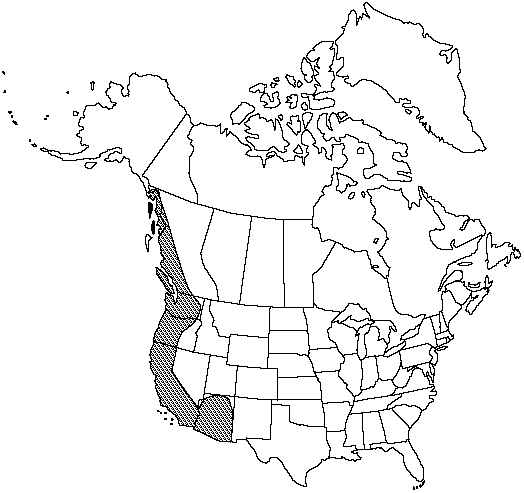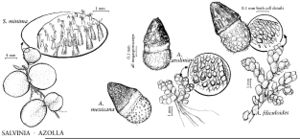Azolla filiculoides
in Lamarck et al., Encycl. 1: 343. 1783.
Plants green to yellowish green or dark red, with 2 growth stages; plants fertile only in mature stage, generally in late spring. Stems prostrate when immature, 1–3 cm, internodes elongate to 5 mm, becoming nearly erect to 5 cm or more when mature and crowded. Hairs on upper leaf lobes strictly unicellular. Megaspores warty with raised angular bumps, each with a tangle of filaments.
Habitat: Stagnant and slow-moving waters.
Distribution

B.C., Ariz., Calif., Oreg., Wash., Mexico, Central America, Europe, ne Asia, s Africa, Pacific Islands in Hawaii.
Discussion
Azolla filiculoides is cold tolerant, surviving even in fragmented parts under thin ice. It usually reaches a climax population in late spring, becomes fertile, collapses, and is replaced by other more heat-tolerant aquatics such as Lemna spp. Hybrids between this species (male) and A. microphylla Kaulfuss (female), a species of Central America, South America, and the West Indies, have been reported (Do V. C. et al. 1989). V. M. Bates and E. T. Browne (1981) reported A. filiculoides from Georgia, far removed from its main range in western North America. The most likely explanation is that the plants represent escapes from horticulture.
